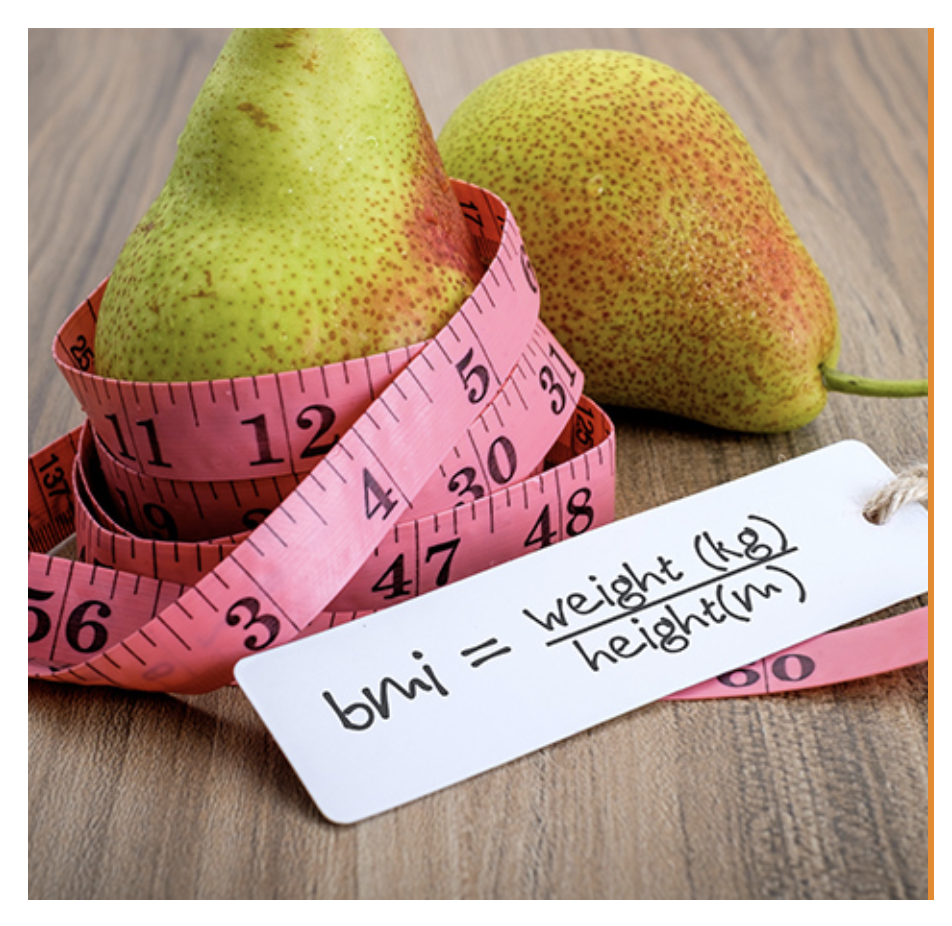Is BMI Accurate? Everything You Need to Know
TRACK YOUR WEIGHT
Is BMI Accurate? Everything You Need to Know

BMI (Body Mass Index) is a healthcare assessment used by doctors and most healthcare facilities. However, it has come under scrutiny by some, who claim it’s misleading to use it to measure whether someone is healthy, overweight or obese.
So, is BMI accurate? Can it be trusted? Let’s take a closer look at what you need to know.
What is BMI?
BMI stands for Body Mass Index and is a mathematical formula that determines whether someone is a healthy weight. It looks at height and weight, comparing your result with people in your age group and in your part of the UK1.
Weight in kilograms is divided by height in meters squared:
- BMI = weight (kg) / height (m²)2
How can you measure your BMI?
If you’d like to check your BMI, you can use a BMI calculator. You’ll need to put your height and weight in accurately, along with your age, sex, ethnic group and activity level.
When it comes to ‘activity levels’ this is more of an estimate, but get as close as you can.
- ‘Inactive’ = less than 30 minutes a week
- ‘Moderately Active’ = 30 to 60 minutes a week
- ‘Active’ = between 60 and 150 minutes a week
Sex and age are useful determining factors when it comes to health. Men tend to have less body fat and more muscle than women. While older people usually have more body fat than younger adults, on average3.
Heritage and ethnicity also plays a role when it comes to health. For example, Asians have been shown to be at a higher risk of certain health problems, such as heart disease, at lower BMI levels than non-Asians4.
What do your results mean?
Once your BMI is calculated, it will be determined whether your weight falls into the ‘normal’ healthy range.
- Underweight = Below 18.5
- Healthy weight = Between 18.5 and 24.9
- Overweight = Between 25 and 29.9
- Obese = Between 30 and 39.95
The calculation does take body shape variations into account.

Is BMI accurate?
BMI does have its limitations. BMI is a snapshot into a person’s health, however, it doesn’t take certain factors into account. These include:
- Fat mass
- Muscle mass
- Bone density
BMI will measure weight, but can’t differentiate between muscle and fat. Muscle is much denser than body fat, so extremely muscular people might well be a healthy weight, but their BMI could be in the obese category. This includes athletes such as boxers and weight trainers.
Therefore, for some people, BMI will not be an accurate measure of health, such as those who are:
- Pregnant
- Have just given birth and/or are nursing
- Have an athletic build
- Are extremely muscular
However, it’s estimated that BMI only doesn’t work for 1% of the population. It’s important to bear in mind that for most individuals, BMI will serve as a good indicator of health.
Despite this, while accurate, BMI is not the only measurement that should be looked at.

Other ways to measure health
Measuring your waist is another important indication of health, as it can ensure you’re not carrying too much fat around your stomach. You can have a healthy BMI and still have excess belly fat, which will raise your risk of developing certain diseases, such as:
- Heart disease
- Type 2 diabetes
- Stroke
You should try and start losing weight if your waist is 94cm (37ins) or more for men and 80cm (31.5ins) or more for women. BMI can’t measure how fat is distributed across the body or if there’s any excess in particular places.
Too much of any body fat can have an adverse effect on your health. The type of fat that wraps around your abdominal organs is known as ‘visceral fat’ and raises the risk of serious medical issues, including high cholesterol, stroke, diabetes and even Alzeheimers6.
Is waist-to-height ratio more accurate than BMI?
Dr Magaret Ashwell a consultant and former science director of the British Nutrition Foundation has called ‘waist-to-height ratio’ a superior predictor of type 2 diabetes and cardiovascular diseases than BMI7.
She has said: “Keeping your waist circumference to less than half your height can help increase life expectancy for every person in the world.”
To put that into practice; a 6ft-tall man should have a waist circumference of 36 inches or less, while a 5ft 4in woman’s waist should not exceed 32 inches8. She claims it’s more accurate and an easier way to measure health than BMI, as BMI doesn’t measure the distribution of fat around the body.
However, while waist circumference does give an indication of abdominal fat levels, Dr Ashwell’s beliefs haven’t been accepted by the wider healthcare community.
Does BMI measure specific disease risks?
On its own, BMI can’t provide any specific details about disease risks. However, doctors will use it in conjunction with other measures and assessments.
Studies have also shown that a high BMI increases the risk of:
- Osteoarthritis
- Certain types of cancer
- High blood pressure
- Gallbladder disease
- Depression
- Sleep apnea
- Type 2 diabetes9
What to do if your BMI is high
BMI is not about shaming those who are overweight or obese, rather, a way of finding out if you’re healthy or at an increased risk of certain illnesses.
The best way to lose weight is to make small, realistic lifestyle changes and increase your activity levels. Some top tips include:
- Eating a healthy diet
- Counting calories to help you see where you’re overeating
- Eating fewer refined carbs and processed foods
- Snacking on more fruit
- Eating home cooked meals as much as possible
- Exercising to lose weight and finding an activity you enjoy
- Prepping your meals in advance
- Walking rather than driving (where possible)
You should also be aware of some hidden causes of weight gain, including:
- Stress
- Watching too much TV
- Lack of sleep
- Portion sizes
- Foods labelled ‘low fat’ (doesn’t mean ‘low calorie’)10
Weight loss is a journey, and it will take time. But, the changes you make sooner rather than later will add up over time and make a big difference in the end.